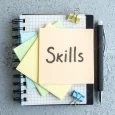
Introduction to Two-Dimensional Figures
In the realm of geometry, two-dimensional figures are a fundamental concept. They are shapes that exist in a flat plane, possessing only length and width, with no depth. Understanding these shapes is crucial not just for academic purposes but for their widespread application in our daily lives.
Identifying Common Two-Dimensional Shapes
The foundation of mastering two-dimensional figures begins with identifying basic shapes such as circles, squares, rectangles, and triangles. These are the building blocks upon which more complex figures are constructed.
Properties of Two-Dimensional Figures
To comprehend two-dimensional figures fully, it’s essential to grasp their properties, including the number of sides, angles, and unique characteristics that set each shape apart.
Perimeter and Area Calculation
Once you’re comfortable with the basic properties, you can move on to calculating the perimeter and area of these shapes. Formulas and practical applications will help you become adept at these fundamental geometric skills.
Classifying Two-Dimensional Figures
Two-dimensional figures can be broadly categorized into regular and irregular shapes. Understanding the distinction between these categories is essential to solve geometric problems effectively.
Practice Problems for Skill Development
Skill development is achieved through practice. Engage in a series of exercises designed to challenge your understanding and application of two-dimensional figure concepts.
Importance of Two-Dimensional Figure Skills
The significance of mastering two-dimensional figures goes beyond the classroom. These skills are valuable in various real-world applications, from designing architectural structures to planning garden layouts.
Enhancing Skills through Practical Examples
To master any skill, you must apply it to real-life scenarios. Explore practical examples that demonstrate how two-dimensional figure skills are used in solving everyday problems.
Visualizing Two-Dimensional Figures
Geometric tools and aids play a crucial role in visualizing and understanding two-dimensional figures. Discover how these tools can make learning more interactive and engaging.
Challenges Faced by Learners
Many students encounter obstacles when dealing with two-dimensional figures. Addressing these common misconceptions and challenges is essential to progress effectively.
Effective Strategies for Skill Improvement
Apart from regular practice, effective study techniques and resources can significantly boost your skills in handling two-dimensional figures.
Interactive Learning Approaches
Engaging students in fun and interactive activities can make learning about two-dimensional figures more enjoyable and memorable.
Teacher’s Role in Developing Skills
Teachers play a pivotal role in guiding students to excel in geometry. Discover how educators can support students in their journey to master two-dimensional figures.
Benefits of Mastering Two-Dimensional Figure Skills
Finally, let’s explore the far-reaching benefits of becoming proficient in two-dimensional figure skills, which extend to academic success and practical problem-solving abilities.
Conclusion
In conclusion, mastering two-dimensional figures is not just an academic pursuit. It is a valuable skill with applications in various aspects of our lives. By understanding the basic shapes, their properties, and practicing problem-solving, you can build a strong foundation for geometric mastery.
FAQs
- Why are two-dimensional figures important to learn?
- Two-dimensional figures are essential for understanding geometry and have practical applications in fields like architecture and design.
- What is the difference between regular and irregular two-dimensional figures?
- Regular figures have congruent sides and angles, while irregular figures do not.
- How can I improve my skills in dealing with two-dimensional figures?
- Consistent practice, using geometric tools, and seeking help from teachers or resources are effective strategies.
- Are two-dimensional figure skills relevant outside of the classroom?
- Yes, these skills are valuable for solving real-world problems and understanding spatial relationships.
- What are some common challenges students face when learning two-dimensional figures?
- Common challenges include difficulty in visualizing shapes in 2D and understanding complex properties.
Remember that mastering two-dimensional figures is a journey, and with dedication and practice, you can become proficient in this important aspect of geometry.




